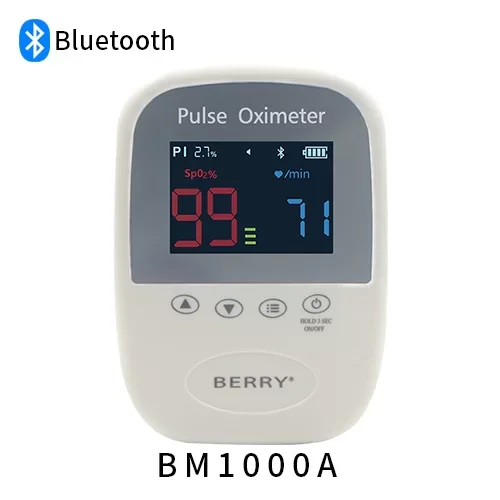Pulse oximeters provide a non-invasive way to measure blood oxygen saturation or arterial hemoglobin saturation. Pulse oximeters can also detect arterial pulsation, so it can also calculate and inform the patient's heart rate. A pulse oximeter is a medical device that measures the oxygen level in a patient's arterial blood.
Smart Pulse Oximeter Features
After heart rate, blood pressure, respiratory rate and temperature, pulse oximetry (PO) is considered the 5th most critical health indicator. Hemoglobin (Hb) is an important component of blood cells responsible for transporting oxygen from the lungs to other tissues in the body. The amount of oxygen contained in hemoglobin at any one time is called oxygen saturation. Oxygen saturation, expressed as a percentage, is the ratio of the oxygen content of the hemoglobin to the oxygen-carrying capacity of the hemoglobin.
Blood oxygen saturation is an important physiological parameter that reflects whether the respiratory function of the human body and whether the oxygen content is normal or not. Severe hypoxia will directly lead to suffocation, shock, death and other tragedies. In developed countries such as Europe and the United States, people attach great importance to the monitoring of blood oxygen, and the oximeter has a high penetration rate.

Smart Pulse Oximeter Applicable People
Patients must monitor blood oxygen in the process of first aid and transportation, fire rescue, and high-altitude flight; heart disease, hypertension, diabetes, especially the elderly will have breathing problems, monitoring blood oxygen indicators can be a good understanding of their own breathing, Whether the immune system is normal or not, blood oxygen saturation has become an important physiological indicator for daily monitoring of ordinary families; medical staff also take blood oxygen as a necessary monitoring item during ward rounds and visits, and the number of use tends to exceed stethoscopes; patients with respiratory diseases are particularly It is a patient who snores for a long time, uses a ventilator and an oxygen generator, and uses an oximeter to monitor the treatment effect in daily life; own physical condition and take necessary protective measures.
Smart pulse oximeter measurement principle
Based on changes in light absorption during arterial pulsations. Two light sources located in the visible red spectrum (660 nm) and the infrared spectrum (940 nm) alternately illuminate the test area (usually fingertips or earlobes). The amount of light absorbed during these pulsations is related to the oxygen content in the blood. The microprocessor calculates the ratio of these two spectra absorbed and compares the result with a table of saturation values stored in memory to obtain the oxygen saturation.
A typical oximeter sensor has a pair of LEDs that face a photodiode through a translucent part of the patient's body (usually a fingertip or earlobe). One of the LEDs is red with a wavelength of 660nm; the other is infrared with a wavelength of 940nm. The percentage of blood oxygen is calculated by measuring these two wavelengths of light with different absorption rates as they pass through the body.

Smart Pulse Oximeter Supplier - Berry
Berry pays attention to product quality and has strict standard on R&D, production and quality control. We have many global advanced testing instruments like multi parameter test instrument, noninvasive blood pressure simulator, oxygen simulator saturation and other testing equipment. And we do testing strictly according to the standard. Looking forward to your visit!
https://www.berryoximeter.com/Smart-Pulse-Oximeter-Functions-And-Applicable-People.html














Comments (0)